#Maria Sepulveda
Explore tagged Tumblr posts
Text
Wednesday – Brooklyn Steel – January 25, 2024

A week into their new American tour, Asheville, N.C., rock five-piece Wednesday sold out Brooklyn Steel on Thursday night, putting on a thrilling show. And as an added bonus, dynamic singer-guitarist Karly Hartzman sat in on the final song of Hotline TNT’s opening set.
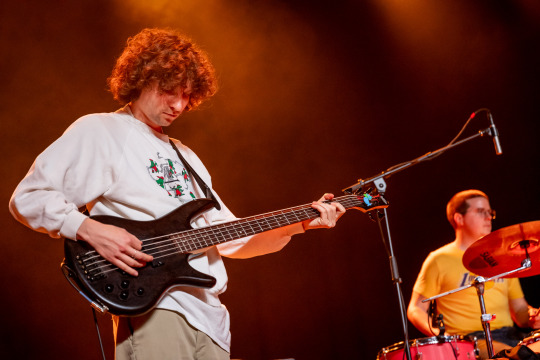

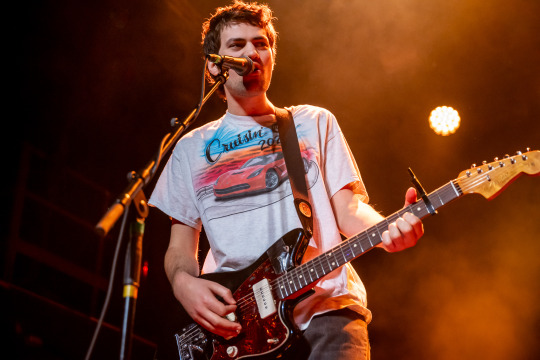


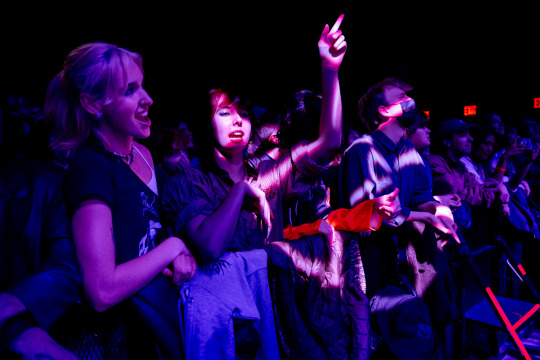
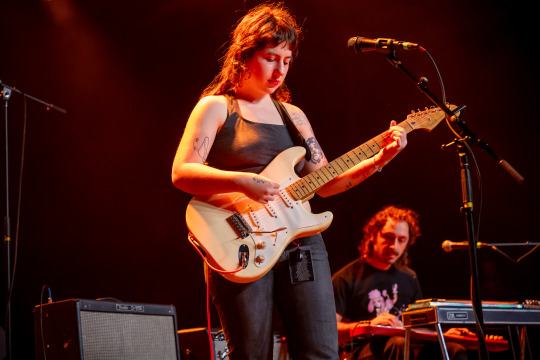


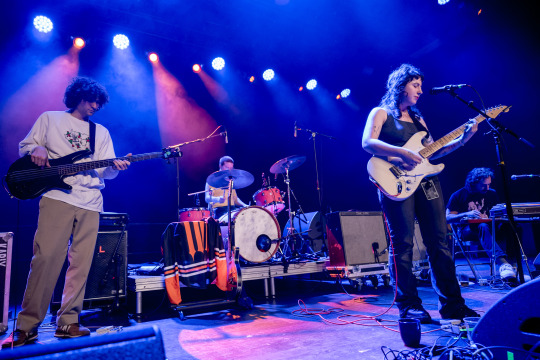

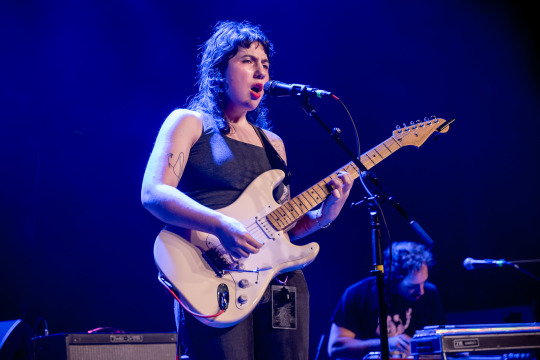

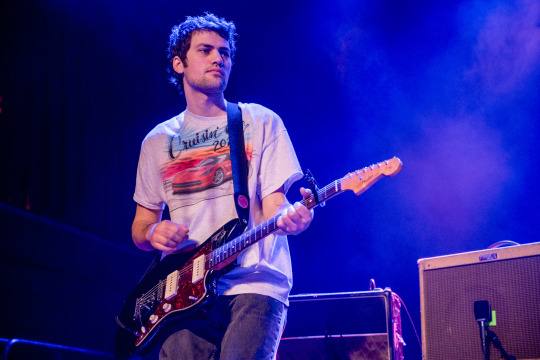
Photos courtesy of Edwina Hay | thisisnotaphotograph.com
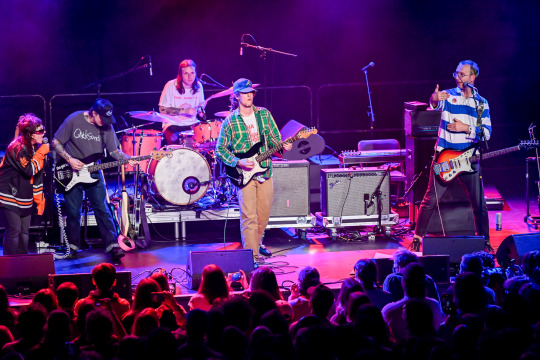

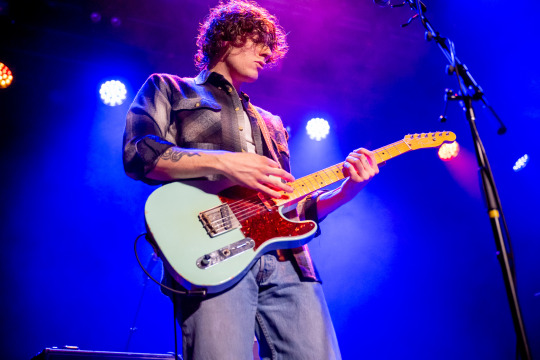


#Alan Miller#Bowery Presents#Brooklyn#Brooklyn Steel#East Williamsburg#Ethan Baechtold#Edwina Hay#Greenpoint#Hotline TNT#Karly Hartzman#Jack Kraus#Jake Lenderman#Live Music#Maria Sepulveda#Mike Raltson#Music#New York City#Photos#Rat Saw God#Sarah Ellington#Wednesday#William Anderson#Williamsburg#Xandy Chelmis
13 notes
·
View notes
Text
instagram

Illustration by moly_ilustra on IG
The Olympics are over, but I needed to give a shout-out to our delegation. We are not many, we didn't win much, but each single one of them gave it all and from here we fiercely supported and followed every single one until the end.
Thank you to all of our 91 participants, 4 medalists, and 14 diplomas. We're proud of all of you with our entire hearts.
Alejandro Solarte, Alexis Cuero, Alisson Cardozo, Ana María Rendón, Andrés Hernández, Ángel Barajas, Ángel Hernández, Ángela Daniela Barón, Angie Orjuela, Angie Valdés, Anthony Rincón, Anthony Zambrano, Arnovis Dalmero, Camilo Villegas, Carlos Alberto Ramírez, Carlos Muñoz, Carolina Arias Vidal, Catalina Pérez Jaramillo, César Herrera, Cristian Ortega, Daniel Martínez, Daniel Restrepo, Daniela Alexandra Arias Rojas, Daniela Caracas González, Daniela Montoya Quiroz, Diego Arboleda, Diego Arias, Erika Lasso, Evelis Aguilar, Fernando Gaviria, Flor Denis Ruiz, Gabriela Bolle, Geiner Moreno, Ilana Izquierdo Zanger, Ingrit Valencia, Jazmín Álvarez, Jenny Arias, Jhancarlos González, Jhon Edison Rodríguez, Jhonny Rentería, Jorelyn Daniela Carabalí Martinez, Jorge Enríquez, Kevin Quintero, Lady Patricia Andrade Rodriguez, Laura Chalarca, Leicy Maria Santos Herrera, Liana Milena Salazar Vergara, Lina Licona, Linda Lizeth Caicedo Alegria, Lorena Arenas, Luis Felipe Uribe, Luis Javier Mosquera, Luisa Blanco, Luz Katherine Tapia Ramirez, Manuela Gómez, Manuela Pavi Sepulveda, Manuela Vanegas Cataño, Marcela Restrepo Valencia, Mari Leivis Sánchez, María Camila Osorio, Maria Camila Reyes Calderón, María Carolina Velásquez, Maria Catalina Usme Pineda, María José Uribe, María Lucelly Murillo, Mariana Pajón, Martha Bayona, Mateo Carmona, Mateo Romero, Mauricio Ortega, Mayra Gaviria, Mayra Tatiana Ramirez Ramírez, Natalia Linares, Nicolás Echavarría, Paula Patiño, Queen Saray Villegas, René López, Ronal Longa, Sandra Milena Sepulveda Lopera, Santiago Arcila, Santiago Buitrago, Stefania Gómez, Stefany Cuadrado, Valeria Araújo, Valeria Arboleda, Víctor Bolaños, Wendy Katerine Bonilla Candelo, Yeison López, Yenny Álvarez, Yílmar González, Yirleidis Quejada Minota
#olympics 2024#colombia#comité olímpico colombiano#colombian olympic committee#(nightmade)#it's funny if you know that 22 of those 91 is just the fútbol team#Instagram
7 notes
·
View notes
Photo

1922-23 c. Maria Sepulveda’s grandparents in their wedding photo in Puerto Rico. From Maria Sepulveda, FB.
69 notes
·
View notes
Text
Updated list of the Big Lots stores that are closing down by state
Alabama:
1327 S Brundidge St., Troy
Arizona:
1416 E Route 66, Flagstaff17510 N 75th Ave, Glendale
3630 W. Baseline Rd., Laveen
2840 E Main St., Ste 109, Mesa
6839 E Main St., Mesa
24760 N Lake Pleasant Pkwy, Peoria
2020 N 75th Ave, Ste 40, Phoenix
230 E. Bell Rd., Phoenix
4727 East Bell Rd., Phoenix
2330 W Bethany Home Rd., Phoenix
4835 E Ray Rd., Phoenix
1260 Gail Gardner Way, Prescott
10220 N 90th St., Scottsdale
940 E Baseline Rd., Tempe
7025 E Tanque Verde Rd., Tucson
4525 N Oracle Rd., Tucson
3900 W Ina Rd., Tucson
2520 S Harrison Rd., Tucson
Arkansas:
2999 N College Ave, Fayetteville
California:
1670 W Katella Ave., Anaheim
6336 E Santa Ana Canyon Rd., Anaheim
2240 El Camino Real, Atascadero
1085 Bellevue Rd., Atwater
1211 Olive Dr., Bakersfield
2621 Fashion Pl., Bakersfield
1482 E 2nd St., Beaumont
353 Carmen Dr., Camarillo
19331 Soledad Canyon Rd., Canyon Country
1611 E Hatch Rd., Ste A Ceres
1927 E 20th St., Chico
12550 Central Ave., Chino
2060 Monument Blvd, Concord
740 N Main St., Corona
5587 Sepulveda Blvd., Culver City
912 County Line Rd., Delano
1085 E Main St., El Cajon
8539 Elk Grove Blvd., Elk Grove
1500 Oliver Rd., Fairfield
9500 Greenback Ln., Ste 22, Folsom
17575 Foothill Blvd., Fontana
1986 Freedom Blvd., Freedom
3520 W. Shaw Ave, Fresno
4895 E Kings Canyon Rd., Fresno
7370 N Blackstone Ave., Fresno
2900 W Rosecrans Ave., Gardena
360 E 10th St., Gilroy
1551 Sycamore Ave., Hercules
42225 Jackson St., Ste B, Indio
3003 W Manchester Blvd., Inglewood
1020 W Imperial Hwy, La Habra
6145 Lake Murray Blvd., La Mesa
4484 Las Positas Road, Livermore
380 S Cherokee Ln., Lodi
1009 N H St, Ste M, Lompoc
2238 N Bellflower Blvd., Long Beach
951 W Pacheco Blvd., Los Banos
1321 West Yosemite Ave., Manteca
665 Fairfield Dr., Merced
111 Ranch Dr., Milpitas
27142 La Paz Rd., Mission Viejo
3900 Sisk Road, Modesto
3615 Elkhorn Blvd., North Highlands
1702 Oceanside Blvd., Oceanside
4430 Ontario Mills Pkwy, Ontario
1875 Oro Dam Blvd E., Oroville
6646 Clark Rd., Paradise
47 Fair Ln., Placerville
30501 Avenida De Las Flores, Rancho Santa Margarita
810 Tri City Ctr., Redlands
2620 Canyon Springs Parkway, Riverside
565 Rohnert Park Expressway, Rohnert Park
6630 Valley Hi Dr., Sacramento
8700 La Riviera Dr., Sacramento
370 Northridge Mall, Salinas
499 W Orange Show Rd., San Bernardino
3735 El Camino Real, Santa Clara
1417 S Broadway, Santa Maria
568 W Main St., Ste B, Santa Paula
2055 Mendocino Ave, Santa Rosa
1189 Simi Town Center Way, Simi Valley
633 Sweetwater Rd., Spring Valley
2720 Country Club Blvd, Stockton
27411 Ynez Rd., Temecula
955 Sepulveda Blvd, Torrance
2681 N Tracy Blvd, Tracy
1840 Countryside Dr., Turlock
225 Orchard Plz, Ukiah
818 Alamo Dr., Vacaville
14790 La Paz Dr., Victorville
2525 S Mooney Blvd., Visalia
13241 Whittier Blvd., Whittier
52 W Court St., Woodland
1320 Franklin Road, Yuba City
56865 29 Palms Hwy, Yucca Valley
Colorado:
6626 South Parker Road, Aurora
1990 S Academy Blvd, Colorado Springs
2975 New Center Point, Colorado Springs
5085 N Academy Blvd, Colorado Springs
2401 N Ave, Ste 19b, Grand Junction
2628 11th Ave, Greeley
8100 W Crestline Ave., Unit B5, Littleton
2151 Main St., Longmont
Connecticut:
1470 Pleasant Valley Road, Manchester
56 Turnpike Square., Milford
3105 Berlin Tpke., Newington
42 Town St., Ste 1200, Norwich
1931 E Main St., Torrington
650 Wolcott St., Waterbury
40 Boston Post Rd., Waterford
560 Windsor Ave., Windsor
Florida:
21697 State Rd., 7, Boca Raton
25191 Chamber Of Commerce Dr., Bonita Springs
901 N Congress Ave., Boynton Beach
7381 52nd Pl E, Bradenton
328 E Sugarland Hwy, Clewiston
4847 Coconut Creek Pkwy, Coconut Creek
2400 W International Speedway, Daytona Beach
34940 Emerald Coast Pkwy, Destin
15271 Mcgregor Blvd., Fort Myers
1761 E Hallandale Beach Blvd., Hallandale
3921 Oakwood Blvd., Hollywood
8265 W Flagler St., Miami
5580 Nw 167th St., Miami Lakes
2882 Tamiami Trl E, Naples
700 Blanding Blvd, Ste 1, Orange Park
11230 S Orange Blossom Trl, Orlando
11672 E Colonial Dr., Orlando
1801 S Semoran Blvd., Orlando
7067 W Broward Blvd., Ste B, Plantation
1440 Ne 23rd St., Pompano Beach
11854 Us Highway 19, Port Richey
511 N State Rd. 7, Royal Palm Beach
3750 Bee Ridge Rd., Sarasota
2236 Se Federal Hwy, Stuart
12601 Citrus Plaza Dr., Tampa
41306 Us Hwy 19 N, Tarpon Springs
Georgia:
2738 Candler Rd., Decatur
375 Pavilion Pkwy, Fayetteville
610 Holcomb Bridge Rd., Ste 300, Roswell
13051 Abercorn St., Savannah
31 Hwy 138 W, Ste 150, Stockbridge
5370 Stone Mountain Hwy, Ste 300, Stone Mountain
687 Main St., Thomson
263 S Liberty St., Waynesboro
Illinois:
8148 S Cicero Ave., Burbank
1699 River Oaks Dr., Calumet City
1139 W Broadway, Centralia
1608 N Larkin Ave., Crest Hill
204 S. Randall Rd., Elgin
10850 Lincoln Trl, Fairview Heights
340 Summit Dr., Lockport
7233 W Dempster St., Niles
17w714 W 22nd St., Oakbrook Terrace
Indiana:
138 W Hively Ave., Elkhart
3958 Illinois Rd., Fort Wayne
8401 Michigan Rd., Indianapolis
2136 E Markland Ave., Kokomo
2806 Frontage Rd., Warsaw
Kansas:
7533 State Ave., Kansas City
2450 South 9th St., Salina
Kentucky:
1321 2nd St., Henderson
1980 Pavilion Way, Lexington
4025 Poplar Level Rd., Unit 102, Louisville
Louisiana:
3161 E Texas St., Bossier City
2354 S Range Ave., Denham Springs
3557 Ambassador Caffery Pkwy, Lafayette
339 South Dr., Ste D, Natchitoches
Maine:
1100 Brighton Ave., Portland
Maryland:
4420 Mitchelville Rd., Bowie
6623 Governor Ritchie Hwy, Glen Burnie
3331 Corridor Marketplace, Laurel
21800 N Shangri La Dr., Unit 20, Lexington Park
11989 Reisterstown Rd #a, Ste A, Reisterstown
Massachusetts:
41 Pond St., Ashland
400 Main St., Dennis Port
178 N King St., Northampton
179 Highland Ave., Seekonk
1150a Union Street Ext., West Springfield
Michigan:
750 Perry Ave., Big Rapids
373 N Willowbrook Rd., Coldwater
2353 N Park Dr., Holland
3669 E. Grand River Ave., Howell
4254 28th St. Se, Kentwood
5625 W Saginaw Hwy, Unit 1, Lansing
32399 John R Rd., Madison Heights
2020 Grand River Ave., Okemos
1401 Spring St., Petoskey
6207 S Westnedge Ave., Portage
2850 Washtenaw Ave., Ypsilanti
Minnesota:
2614 Bridge Ave., Albert Lea
Missouri:
4201 S Noland Rd., Independence
3225 Missouri Blvd., Jefferson City
13637 Washington St., Kansas City
1417 N Belt Hwy, Saint Joseph
4433 Lemay Ferry Rd., Saint Louis
4930 Christy Blvd., Ste 2, Saint Louis
Montana:
1200 10th Avenue South, Great Falls
2930 Prospect Ave., Helena
New Hampshire:
216 Washington St., Claremont
Nevada:
1601 W Craig Rd., N Las Vegas
New Jersey:
471 Green St., Woodbridge
New York:
2276 Delaware Ave., Buffalo
698 S Ogden St., Buffalo
4406 State Route 5 & 20, Ste 129, Canandaigua
260 Voice Rd., Carle Place
231 Centereach Mall, Centereach
2309 N Triphammer Rd., Ithaca
4645 Commercial Dr., New Hartford
316 Cornelia St., Plattsburgh
43 Burnett Blvd., Poughkeepsie
751 Upper Glen St., Ste 2, Queensbury
North Carolina:
8215 University City Blvd., Ste E, Charlotte
9535 S Blvd., Ste C, Charlotte
2000 Avondale Dr., Ste E, Durham
3420 Southwest Durham Dr., Durham
822 E Main St., Jefferson
1515 Garner Station Blvd., Raleigh
6540 Glenwood Ave., Raleigh
Ohio:
11372 Princeton Pike, Cincinnati
9690 Colerain Ave., Cincinnati
359 Miamisburg Centerville Rd., Dayton
1520 N Clinton St., Defiance
1170 Indiana Ave., Saint Marys
410 E Perkins Ave., Sandusky
4925 Jackman Rd., Ste 15, Toledo
7779 Tylersville Rd., West Chester
Oregon:
2000 14th Ave. Se, Albany
18565 Sw Tualatin Valley Hwy, Beaverton
1960 Echo Hollow Rd., Eugene
304 Ne Agness Ave., Grants Pass
2083 Ne Burnside Rd., Gresham
2121 Newmark St., North Bend
16074 Se Mcloughlin Blvd., Ste 8, Portland
2025 Lancaster Dr. Ne, Salem
Pennsylvania:
713 E Baltimore Ave., Clifton Heights
2820 Gracy Center Way, Coraopolis
201 West Lincoln Hwy, Exton
345 Scarlet Rd., Ste 22, Kennett Square
199 Franklin Mills Blvd., Philadelphia
2980 Whiteford Rd., York
South Carolina:
1016 Pine Log Rd., Aiken
1841 J A Cochran Byp., Ste A, Chester
1937 Wilson Rd., Newberry
South Dakota:
1617 Eglin St., Rapid City
Tennessee:
209 S Royal Oaks Blvd., Ste 206, Franklin
2301 Gallatin Pike N, Madison
1410 S 1st St., Union City
Utah:
702 E State Rd., American Fork
1030 North Main Street, Layton
1617 North Main Street, Logan
5516 South 900 East, Murray
Vermont:
1400 Us Route 302, Berlin
303 Us Route 4 E., Rutland
Virginia:
590 Branchlands Blvd., Charlottesville
736 Warrenton Rd, Unit 102, Fredericksburg
2110 Wards Rd., Lynchburg
7743 Sudley Rd., Manassas,
5900 E. Virginia Beach Blvd, Norfolk
8533 Midlothian Tpke., North Chesterfield
1650 General Booth Blvd, Ste 200, Virginia Beach
14603 Telegraph Rd., Woodbridge
Washington:
1650 Birchwood Ave., Bellingham
14907 4th Ave Sw., Burien
17307 Se 272nd St., Covington
6727 Evergreen Way, Everett
1301 W Meeker St., Kent
1515 Marvin Rd Ne., Lacey
5401 100th St Sw, Ste 102, Lakewood
5710 196th St Sw, Lynnwood
2815 Capital Mall Drive Sw, Olympia
1940 E. 1st St., Port Angeles
3399 Bethel Rd. Se, Port Orchard
120 31st Ave Se, Puyallup
14215 Se Petrovitsky Rd., Renton
1743 George Washington Way, Richland
9612 N Newport Highway, Spokane
1414 72nd St., Tacoma
2100b Se 164th Ave., Ste E, Vancouver
151 Easy Way, Wenatchee
Wisconsin:
616 W Johnson St., Fond Du Lac
3960 Mormon Coulee Rd., La Crosse
N78w14511 Appleton Ave., Menomonee Falls
5415 Washington Ave., Mount Pleasant
699 S Green Bay Rd., Neenah
3426 Kohler Memorial Dr., Sheboygan
1690 S Main St., West Bend
Wyoming:
3501 E Lincolnway, Cheyenne
0 notes
Text
Rock, samba, pop, reggae, MPB e nativista gaúcho são alguns dos gêneros musicais que vão ser apresentados ao público a partir desta quinta-feira (25), quando começa o 10º Festival da Canção de Balneário Camboriú. O evento ocorre no Teatro Municipal Bruno Nitz até sábado (27), com entrada gratuita e início às 20h nos três dias. Disputam as premiações do festival 30 composições de estilo livre, originais, inéditas, com música e letra em língua portuguesa, de autores maiores de 18 anos e residentes em Santa Catarina. Na primeira noite, antes do público conhecer as composições concorrentes, a cantora e compositora pop Laura Schadeck abre o festival. Laura ganhou projeção nacional no The Voice Kids em 2016, do qual foi semifinalista. Após, 15 canções que disputam o evento vão ser apresentadas, e cinco delas serão escolhidas pelos jurados para a fase final, no sábado (confira a programação completa no fim do texto). Na sexta-feira (26), segunda noite, outras 15 canções serão apresentadas e, também, cinco irão para a final. No sábado, as dez composições finalistas disputam a premiação, com transmissão pelo Facebook da Prefeitura de Balneário Camboriú. Os três primeiros colocados ganharão dinheiro e troféu. Já melhor intérprete, melhor instrumentista e autor da melhor letra receberão troféu. O evento tem como novidade nesta edição a figura de uma madrinha, que será a cantora Karinah. A artista faz sucesso no país cantando com ícones do samba. Karinah vai cantar no sábado. Nos três dias, a capacidade de público será reduzida em 30% por causa da pandemia. Também deverão ser cumpridas as medidas sanitárias para evitar a disseminação da Covid-19. Promovido pela Prefeitura de Balneário Camboriú, por meio da Fundação Cultural, o festival tem apoiadores, selecionados por um edital público. Abaixo da programação, confira a relação dos apoiadores e como vão colaborar. PROGRAMAÇÃO 25 de novembro, quinta-feira - a partir das 20h Cerimônia de abertura Show de abertura: Laura Schadeck e banda Apresentação de 15 canções classificadas (veja abaixo) Apresentações de dança: Space Dance Studio Julio Leduc – Instrumental Anúncio de cinco canções finalistas 26 de novembro, sexta-feira - a partir das 20h Show de abertura: Maykow Santos - Show Acústico Catarinense Apresentação de 15 canções classificadas (veja abaixo) Apresentação da cantora Marilice Caldat Show de encerramento: Maykow Santos - Show Acústico Catarinense Anúncio de cinco canções finalistas Sorteio da ordem de apresentação das canções finalistas 27 de novembro, sábado - a partir das 20h Final Show de abertura: Banda Maria do Cais Apresentação especial da Madrinha do Festival, Karinah Apresentação das 10 canções finalistas Apresentação de dança: Grupo Charruas Show de encerramento: Banda Maria do Cais Cerimônia de premiação ORDEM DE APRESENTAÇÃO DAS COMPOSIÇÕES CONCORRENTES NAS DUAS SEMIFINAIS Dia 25/11 1. Marcos Kelm Do Nascimento – Baile Do Cola Atada 2. Alberto Damian Montiel – Vento De Luz 3. Laura Tereza Tomasini Schneider – Meu Sonho 4. Maison Jacinto Freitas – Vou Deixar Pra Lá 5. Rafael Bodanese Cogo – Estilo Beija-Flor 6. Gabriel Virtuoso De Oliveira – O Mundo Cabe Em Nossas Mãos 7. Amanda Zaions Cadore – Arrebentação 8. Noemi Da Silva Carvalho – Não É Preciso Ter 9. William Molin – Nós Vamos Vencer 10. Leandro De Oliveira Nakagawa – Quando Isso Tudo Passar 11. Gandhi De Oliveira Martinez – Um Dia Normal 12. Leonardo Schmitt Vieira – Morada De Sonho 13. Bárbara Trelha Oliveira – Cartas De Wether 14. Jorge Heleno Fidélis Pereira – Não Quero Mais Andar Sozinho 15. Augusto Da Silveira – Uma Ilha Dia 26/11 1. Jose Guanaes Sepulveda – Arritmia 2. Mauricio Coldebella – Livianito 3. Roberta Kelly Da Costa Arantes – Mamãe Lavadeira 4. Priscilla Dinah Costa Lourenço – Espelhos 5. Gustavo Dos Santos Merisio – Paz Interior 6. Venâncio Domingos Neto (Vê Domingos) - Eu também sou do mato 7. Robson Coldebella – Canção Pra Matear Com Deus 8. Elisa Maria Cordeiro �� Deusa Música 9. Glenio Marques Pinto – Verso
10. Juan Daniel Isernhagen – Tenho Confiança Na Gente Do Sul 11. Victor Hugo Praun – Poder Do Amor 12. Edegar Soares Rodrigues – Meu Canto 13. Daniel De Miranda – Alguém 14. Moises Peteffi – Malabarista De Primeira 15. Mario Rodrigo Jacinto Freitas – Distopia APOIADORES - Jornal Página 3 – Textos e imagens de divulgação referente ao festival - Instaladora Palestina – Impressão de material para divulgação e adesivos para os troféus - Space Dance Studio – Três apresentações de dança no festival - Oceanic Aquarium – 20 ingressos para Oceanic Aquarium e 20 ingressos para Classic Car Show para sorteio no festival - Tiqsi Filmes – Serviço de uma live-stream da noite da final do festival - Floricultura Sui Generis – Arranjos de flores para o palco, camarins e buquê de flores - Restaurante O Pharol – Dois vouchers para jantar para dois casais, para sorteio no festival - Koeddermann Consultores Associados – 100 camisetas pretas para o festival - ACIBALC – sacolas - Fundação Municipal de Esportes - troféus - Secretaria de Turismo e Desenvolvimento Econômico – produção de filmagens ___________________ Fundação Cultural de Balneário Camboriú (47) 3267-7011 Diretoria de Comunicação Jornalista: Silvana de Castro Fotos: Celso Peixoto/Arquivo PMBC (47) 3267-7022 www.instagram.com/prefeituradebc FOTOS Fonte: Prefeitura de Balneário Camboriú
0 notes
Text
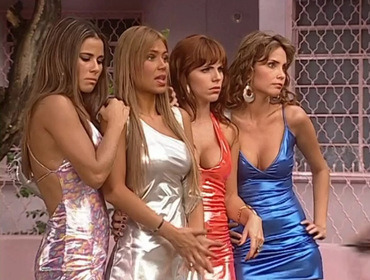
Vanessa, Paola, Yesica “La Diabla”, y Ximena - Sin Senos No Hay Paraiso (2008)
#Carolina Betancourt#Alejandra Pinzón#Maria Fernanda Yepes#Carolina Sepulveda#Sin Senos No Hay Paraiso#2008#SSNHP#novela
204 notes
·
View notes
Text
Horóscopo De Tarot, tarot online amor chile
Sin duda alguna, el amor es uno de los sentimientos más fuertes y más impactantes que pueden existir en la vida. De hecho, de él, derivan muchas otras emociones que son pilares para tu...
Tarot Y Videncia:
LLAMADAS ESPAÑA
🇪🇸: +34 911 438 430 - 806 499 472
LLAMADAS INTERNACIONALES
🇺🇸 Estados Unidos: +1 21 37 84 79 82
🇲🇽 MEXICO: +52 55 84 21 13 51
🇦🇷 ARGENTINA: +54 11 59 84 40 88
🇨🇴 COLOMBIA: +57 15 08 73 39
¿Luchas por seguir adelante? Obtén respuestas instantáneas con una Lectura de Tarot.

0 notes
Text
Classic books of all South America

Argentina
The Invention of Morel - Adolfo Bioy Casares
The Seven Madmen - Roberto Arlt
Zama - Antonio Di Benedetto
Hopscotch - Julio Cortázar
Scarecrow & Other Anomalies - Oliverio Girondo
Idle Days in Patagonia - William Henry Hudson
Cris & Cris - Maria Felicitas Jaime
Tropical Night Falling - Manuel Puig
How I Became a Nun - César Aira
The Tango Singer - Tomás Eloy Martínez
Los Pasajeros del Jardin - Silvina Bullrich
Friends of Mine - Angela Pradelli
Traveller of the Century - Andrés Neuman
Bolívia
Raza de Bronce - Alcides Arguedes
Turing’s Delirium - Edmundo Paz Soldán
Juan de la Rosa - Nataniel Aguirre
Let me speak! - Domitila Barrios de Chungara
Los Deshabitados - Marcelo Quiroga Santa Cruz
Brazil
I’ve alredy done a full post about Brazilian Classics. You can check out here!
Chile
The House of Spirits - Isabel Allende
Curfew - José Donoso
Seeing Red - Lina Meruane
My Tender Matador - Pedro Lambel
The Sevage Detectives - Roberto Bolaño
The Postman - Antonio Skarmeta
The Shrouded Woman - María Luisa Bombal
Ways of Going Home - Alejandro Zambra
The Absent Sea - Carlos Franz
The Man Who Read Love Stories - Luis Sepulveda
Colombia
Dark Stars - Arnoldo Palacios
The Armies/New Directions - Evelio Rosero
The Vortex - José Eustácio Rivera
One Hundred Years of Solitude - Gabriel Garcia Marquez
Blue Days - Fernando Vallejo
En Diciembre Llegan las Brisas - Marvel Moreno
Catalina - Elisa Mujica
In the Beginning Was the Sea - Tomás González
Love in the Time of Cholera - Gabriel Garcia Marquez
News of a Kidnapping - Gabriel Garcia Marquez
Equador
Polvo y Ceniza - Eliécer Cárdenas
Huasipungo - Jorge Icaza
Las cruces sobre el agua - Joaquín Gallegos Lara
Los que se van - Demetrio Aguilera Malta, Joaquín Gallegos Lara and Enrique Gil Gilbert
Los Sangurimas - José de la Cuadra
Cumanda or A Drama Between Savages - Juan León Mera
Between Marx and a Naked Woman - Jorge Enrique Adoum
Juyungo - Adalberto Ortiz
Un hombre muerto a puntapiés - Pablo Palacio
Guiana
The Shadow Bride - Roy Heath
Guianese Poetry: Covering the Hundred Years' Period, 1831-1931 - Many authors
Poesias escogidas - Martin Carter
Selected Poems of Egbert Martin
Paraguai
I, the Supreme - Augusto Roa Bastos
Son of Man - Augusto Roa Bastos
Poetry from Rubén Bareiro Saguier
Dias roturados: poemas de la guerra civil - Elvio Romero
El sol bajo las raíces - Elvio Romero
Hombres, Mujeres y Fantoches - Gabriel Casaccia
Los Exiliados - Gabriel Casaccia
Poetic Anthology - Josefina Plá
The flame and sand - Josefina Plá
Peru
Peruvian Traditions - Ricardo Palma
El Sexto - José Maria Arguedas
The Time of the Hero - Mario Vargas Llosa
Aunt Julia and the Scriptwriter - Mario Vargas Llosa
The War of the End of the World - Mario Vargas Llosa
The Feast of the Goat - Mario Vargas Llosa
The Bad Girl - Mario Vargas Llosa
A World for Julius - Alfredo Bryce Echenique
La palabra del mudo - Julio Ramón Ribeyro
Broad and Alien Is the World - Ciro Alegria
Los heraldos negros - César Vallejo
El Mundo Es Ancho Y Ajeno - Ciro Alegría
Seven Interpretive Essays on Peruvian Reality - José Carlos Mariátegui La Chira
Suriname
The Queen of Paramaribo - Clark Bertram Accord
We Slaves of Suriname - Anton de Kom
Two evenings in Saramaka - Richard Price
Daring life - Astrid Heligonda Roemer
Uruguay
Open Veins of Latin America - Eduardo Galeano
The Ship of Fools - Cristina Peri Rossi
La vida breve - Juan Carlos Onetti
La Tregua - Mario Benedetti
Jungle Tales - Horacio Silvestre Quiroga Forteza
The Book of Embraces - Eduardo Galeano
Body Snatcher - Juan Carlos Onetti
Aventuras de los jóvenes dioses - Eduardo Galeano
Ariel - José Enrique Rodó
Pedro y al Capitán - Mario Benedetti
The Naked Woman - Armonía Somers
Venezuela
Dead Houses - Miguel Otero Silva
Las lanzas coloradas - Arturo Uslar Pietri
Cuando quiero llorar no lloro - Miguel Otero Silva
Canaima - Rómulo Gallegos
Memories of Altagracia - Salvador Garmendia
Cantaclaro - Rómulo Gallegos
Boves, El Urogallo - Francisco Herrera Luque
Cuentos grotescos - José Rafael Pocaterra
#latin america#latin america academia#classic books#books#light academia#romantic academia#dark academia#chaotic academia#adhd academia#dark academia aesthetic#bookblr#studyblr brazil#bookworm#book nerd#bookaholic#reading
363 notes
·
View notes
Photo

3 notes
·
View notes
Text
Marvel Latino Superheroes
1. María Aracely Josefina Penalba de las Heras aka Hummingbird - Mexican born
2. Miles Morales aka Spider Man - biracial; half Puerto Rican and half black
3. Miguel Santos aka Living Lightning - Hispanic nationality unknown but is American born
4. Sam Alexander aka Nova - biracial; half Mexican and half white
5. Victor Alvarez aka Power Man - biracial; Afro-Dominican
6. Humberto Lopez aka Reptil - Mexican born
7. Roberta Mendez aka Captain America 2099 - Hispanic nationality unknown but is American born
8. Miguel O’Hara aka Spider Man 2099 - biracial; half Irish and half Mexican
9. Bonita Juarez aka Firebird - Chicana (Mexican American)
10. Robbie Reyes aka Ghost Rider - Chicano (Mexican American)
11. Alejandra Jones aka Ghost Rider - Hispanic nationality unknown
12. Maya Lopez aka Echo - half Hispanic and half Cheyenne, the former nationality is unknown
13. Ajak aka The Legendary Inca Warrior - Peruvian born
14. Anya Corazon aka Arana - half Mexican and half Puerto Rican American
15. Gabriel Vargas aka Captain Universe - Chicano (Mexican American)
16. Gabriel Carlos Dantes Sepulveda aka Defensor - Argentinian born
17. Fabio Medina aka Egg (formerly known as Goldballs) - Hispanic nationality unknown but is American born
18. America Chavez aka Miss America - biracial; Afro-Puerto Rican Caribbean
19. Carmen Cruz aka Gimmick - biracial; Afro-Latina
20. Laura Kinney aka Wolverine - biracial; Afro-Latina and half white; her exact ethnicity is unknown but first appearance (in the animated X-Men: Evolution series) depicts her with dark skin and her “mother” had darker skintone with blonde hair. Her creators didn’t specify her ethnicity but I do think she’s Hispanic. And given the darker skintone of her “mother”, she’s most likely Afro-Latina. I know in recent comic adaptation portray her with way lighter skin tone but her ORIGINAL appearance shows her with DARKER skintone (thought not as dark as her “mother”). As such, I have seen Laura as half white and half Afro Latina but the Hispanic nationality is unknown. Also, as a side note, her creators also mentioned they planned to do a LGBT storyline with Laura but it was axed. So, she’s also LGBT.
21. Cecilia Reyes - Puerto Rican and depicted with dark-skinned complexion
22. Roberto da Costa aka Sunspot - biracial; Afro-Brazilian
23. Armando Munoz aka Darwin - biracial; Afro-Latino; Hispanic nationality unknown
24. Julio Richter aka Rictor - Mexican born
25. Gloria Dolores Muñoz aka Risque - biracial; half Seminole and half Cuban American
26. Brian Cruz aka Tag - Puerto Rican
27. Angel Salvadore aka Tempest - biracial; Afro-Latina; Hispanic nationality unknown
28. Lucia Callasantos aka Thornn - Hispanic nationality unknown
29. Benito Serrano aka Toro - Cuban
30. Gabriel Cohuelo aka Velocidad - Mexican born
31. Hector Ayala aka White Tiger I - Puerto Rican born
32. Angela del Toro aka White Tiger II - Puerto Rican
33. Ava Ayala aka White Tiger III - Puerto Rican American born
34. Sofia Mantega aka Wind Dancer - Venezuelan born
35. Maria De Guadalupe "Lupe" Santiago aka Silverclaw - biracial; Hispanic nationality unknown but lives in a fictional Hispanic Island or country and is an Indigenous member
36. Angelo Espinosa aka Skin - Puerto Rican American born
37. Yo Yo Rodriguez aka Slingshot - Puerto Rican born
38. Fernanda Rodriguez aka Red Locust - Chicana (Mexican American)
39. Nina the Conjuror - Brazilian, given her dark skintone, she might be Afro-Brazilian
40. German Aguilar - Mexican
41. Eva Quintero - Mexican
42. Ellie Camacho - biracial; half white and half Hispanic; American born
Please list any more if you don’t see any on the list. Be respectful with the comments.
16 notes
·
View notes
Photo

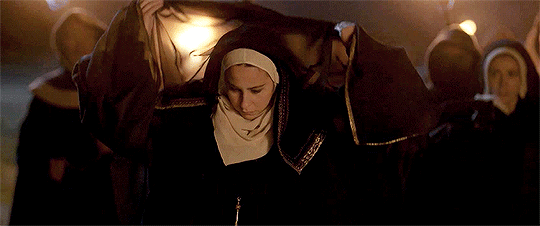
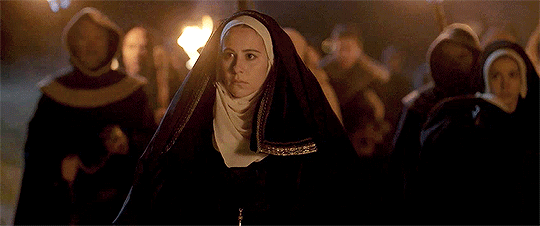
...my sister was borne of a different garden, a land where no flowers should have ever grown. She sprung up into our lives when we least expected it, blooming in the darkness.
#sal's literal sister wow#& Ana Maria Sepulveda#his half sister anyways so there's that#and younger than him#to be tagged#& sal's family.
0 notes
Text
Carlos Rey Emperador, Episode 14
Tavera: “...the studies tire him [Philip], he doesn’t like riding and doesn’t show interest in the matters of state”
Me: Excuse me, what?
Philip enjoyed riding and hunting very much, as well as studying when he finally got the right tutors. His intellectual curiosity and capacity was huge but for some reason this episode only gives him a gardening thing (Philip loved plants but common). And Granvelle wasn’t his tutor, for God’s sake, not even close! Where are Juan de Zúñiga, Siliceo, Juan Cristobal Calvete de Estrella, Honorato Juan, Juan Gines de Sepulveda and Francisco de Vargas Mexia? Or at least one of them?
Also, Philip on his wedding night having sex first with his wife and then with his mistress? Ugh, just no.
Another unfortunate things is that Marcel Borràs doesn’t resemble Philip (and overacts in trying to pass for a teenager), and they gave him an awful hairstyle. I think that the casting department could have found someone more suitable, especially visually. The same can be said about the actress who plays Maria Manuela. The real Maria Manuela was plump and red-haired.
BUT despite all inaccuracies I like that they show Philip’s soft side, his sensitivity and thoughtfulness.
8 notes
·
View notes
Text
Com entrada gratuita, o Festival da Canção de Balneário Camboriú vai movimentar o Teatro Municipal Bruno Nitz de 25 a 27 de novembro. Disputam o evento 30 composições de estilo livre, originais, inéditas e com música e letra em língua portuguesa. O festival, que está na 10ª edição, premia canções de autores maiores de 18 anos e residentes em Santa Catarina. Na quinta-feira passada (11), foi sorteada a ordem de apresentação dos artistas (confira a programação completa no fim do texto). Serão duas semifinais (25 e 26 de novembro) e a final (27 de novembro). Os três primeiros colocados ganharão dinheiro e troféu. Já melhor intérprete, melhor instrumentista e autor da melhor letra receberão troféu. Nos três dias, o festival começa às 20h. A capacidade de público será reduzida em 30% por causa da pandemia. Também deverão ser cumpridas as medidas sanitárias para evitar a disseminação da Covid-19. O evento tem como novidade nesta edição a figura de uma madrinha, que será a cantora Karinah. A artista faz sucesso no país cantando com ícones do samba. Karinah vai se apresentar na final do festival. PROGRAMAÇÃO 25 de novembro, quinta-feira - a partir das 20h Cerimônia de abertura Show de abertura: Laura Schadeck e banda Apresentação de 15 canções classificadas (veja abaixo) Apresentações de dança: Space Dance Studio Julio Leduc – Instrumental Anúncio de cinco canções finalistas 26 de novembro, sexta-feira - a partir das 20h Show de abertura: Maykow Santos - Show Acústico Catarinense Apresentação de 15 canções classificadas (veja abaixo) Apresentação da cantora Marilice Caldat Show de encerramento: Maykow Santos - Show Acústico Catarinense Anúncio de cinco canções finalistas Sorteio da ordem de apresentação das canções finalistas 27 de novembro, sábado - a partir das 20h Final Show de abertura: Banda Maria do Cais Apresentação especial da Madrinha do Festival, Karinah Apresentação das 10 canções finalistas Apresentação de dança: Grupo Charruas Show de encerramento: Banda Maria do Cais Cerimônia de premiação ORDEM DE APRESENTAÇÃO DAS COMPOSIÇÕES CONCORRENTES NAS DUAS SEMIFINAIS Dia 25/11 1. Marcos Kelm Do Nascimento – Baile Do Cola Atada 2. Alberto Damian Montiel – Vento De Luz 3. Laura Tereza Tomasini Schneider – Meu Sonho 4. Maison Jacinto Freitas – Vou Deixar Pra Lá 5. Rafael Bodanese Cogo – Estilo Beija-Flor 6. Gabriel Virtuoso De Oliveira – O Mundo Cabe Em Nossas Mãos 7. Amanda Zaions Cadore – Arrebentação 8. Noemi Da Silva Carvalho – Não É Preciso Ter 9. William Molin – Nós Vamos Vencer 10. Leandro De Oliveira Nakagawa – Quando Isso Tudo Passar 11. Gandhi De Oliveira Martinez – Um Dia Normal 12. Leonardo Schmitt Vieira – Morada De Sonho 13. Bárbara Trelha Oliveira – Cartas De Wether 14. Jorge Heleno Fidélis Pereira – Não Quero Mais Andar Sozinho 15. Augusto Da Silveira – Uma Ilha Dia 26/11 1. Jose Guanaes Sepulveda – Arritmia 2. Mauricio Coldebella – Livianito 3. Roberta Kelly Da Costa Arantes – Mamãe Lavadeira 4. Priscilla Dinah Costa Lourenço – Espelhos 5. Gustavo Dos Santos Merisio – Paz Interior 6. Ricardo Batista Dos Santos – Só Um Estranho 7. Robson Coldebella – Canção Pra Matear Com Deus 8. Elisa Maria Cordeiro – Deusa Música 9. Glenio Marques Pinto – Verso 10. Juan Daniel Isernhagen – Tenho Confiança Na Gente Do Sul 11. Victor Hugo Praun – Poder Do Amor 12. Edegar Soares Rodrigues – Meu Canto 13. Daniel De Miranda – Alguém 14. Moises Peteffi – Malabarista De Primeira 15. Mario Rodrigo Jacinto Freitas – Distopia ___________________ Fundação Cultural de Balneário Camboriú (47) 3267-7011 Diretoria de Comunicação Jornalista: Silvana de Castro Foto: Celso Peixoto/Arquivo PMBC (47) 3267-7022 www.instagram.com/prefeituradebc FOTOS Fonte: Prefeitura de Balneário Camboriú
0 notes
Photo

Opening reception: September 27, noon, Library Gallery Snacks will be provided
Connections is a project in which different artists based on Weimar (GER) Minneapolis (USA) and Cali (COL) submitted posters thinking on the idea of connections and how to patchwork imagery from different cultures. Their proposals were displayed and mixed by Andreas Bartolomendi (GER), Camilo Aguirre (COL) and Cesar Garcia (COL) and reprinted in screenprinting and digital formats. The outcome of this mixtures will be displayed from october to november in the Universidad Javeriana de Cali, Bauhaus Universität in Weimar and the Minneapolis College of Art and Design.
The project was attended by: Jiahao Chen, Yujie Cao, Patrick Sexton, Maria Jose Castillo, Reyn Boyd, Georgia Peaches, Adam Giordano, Alice Gompels, Andreas Bartolomendi, Corina Lobinger, Doi de Luise, Frankie Brown, Josephine Latzlau, Yael Omer, Alejandro Sepulveda, Ana Rosero, Cesar Garcia, Dayana Camacho, Maria Tafur, Nataly Rengifo, Camilo Aguirre, Lorena Tenorio. And was curated by Camilo Aguirre and Andreas Bartolomendi. September 27–October 21, 2019.
10 notes
·
View notes
Text
A 24 de agosto de 1820; Aqueles que gritaram em busca da liber(al)dade.
O Sinédrio (até à Revolução):
Em 1917, Manoel Fernandes Thomaz era desembergador da relação do Porto. Era próximo de José Ferreira Borges e José da Silva Carvalho. Estavam preocupados porque a Corte estava longe e o pais estava sob governo estrangeiro.
Decidiram então formar um corpo compacto que dirija o movimento em prol da liberdade. O Sinédrio foi oficialmente criado em 1818, entre os 3 mencionados acima, João Ferreira Vianna e Ferreira Borges.
Juntou-se ao movimento Duarte Lessa, José Pereira de Menezes, Francisco Gomes da Silva, João da Cunha Sotto-Mayor, José Maria Lopes Carneiro e José Gonçalves dos Santos Silva.
Em 1820, com o despoletar das revoluções liberais em Espanha, o Sinédrio percebeu que era altura de atuar e passar das sombras para a nação.
João da Cunha e o Coronel Cabreira foram essenciais para o inicio da revolução, e nomes como o Tenente Coronel Gil, Tenente Coronel Pamplona, Tenente Coronel Guedes, e foram apoiados pelos Corpo da Policia do Porto e milícias da Maia e da Feira (Major José Pedro Cardoso da Silva).
Segundo José Maria Xavier D’Araujo, que fez parte da revolução, Fernandes Tomás era bastante assertivo e de voz pesada, de postura sublime, discursava para os membros do Sinédrio a necessidade de haver uma revolução que trouxesse o Rei para Portugal e nos libertasse do governo estrangeiro.
A revolução estava marcada para dia 29 de Junho de 1820, mas por circunstância adversas avisadas por Coronel Pereira, teve que ser adiada. Apenas no final de Junho as preparações para a revolução se puderam dar. Em Julho o Sinédrio viveu um grande clima de instabilidade que apenas fora recomposta por João da Cunha que reconciliou os animos.
Em fins de Julho, Fernandes Tomás viajou até Lisboa para obter apoios na capital e saber o estado político do país. Foi enquanto este esteve fora que se juntou a apoiar a revolução o Doutor Fr. Francisco se S. Luiz, figura bastante conceituada no país.
Estava assim tudo a postos para que a revolução se desse mal Fernandes Tomás regressasse de Lisboa em Agosto.
A Pré-Revolução:
No dia 18 de Agosto, Coronel Sepulveda junta-se ao Sinédrio, é o último membro a entrar no mesmo antes de se iniciar a revolução e foi uma figura crucial para o sucesso do movimento. Assim, marcaram a revolução para dia 24 de Agosto.
Dia 21 desse mês, juntaram-se para criar o Manifesto para a população conhecer as suas intenções. Neste Manifesto proposto por António da Silveira, assinou-se que seria formado um Conselho Militar formado pelos Coronéis dos Corpos de Guarnição do Porto. Este convocaria a Câmara Municipal, que ouviria o povo e consultá-lo-ia para decidir quem deveria formar a Junta do Governo (a qual se chamaria Junta de Braganções).
Esta Junta teria como função representar o Rei para remediar a situação do país, regressando a Portugal.
No entanto, Fernandes Tomas opôs-se a Silveira, visto que tinha já um Manifesto planeado. Coube a Spulveda, João da Cunha e Ferreira Borges. Dia 22, encontraram-se com Silveira e propuseram um outro Manifesto que conciliasse as suas ideias com as de Fernandes Tomás, acabando por ser assinado.
Dia 23, encontraram-se todos em casa de Ferreira Borges (ver onde era a casa) e escreveram as proclamações e cartas para a Câmara e Autoridades, de maneira que a Imprensa do Porto ficasse cercada de soldados para não permitir a transmissão de comunicação.
No entanto, as autoridades não estavam dentro do Sinédrio ou da revolução. O general Navarro avisou o Sinédrio que não queria trair o governo para o qual trabalhava, mas que também não se opunha à revolução.
The D-Day, 24 de Agosto de 1820:
Ao amanhecer, foi Coronel Cabreira quem reuniu a Artilharia no Campo de Santo Ovídio, fazendo-se ouvir uma missa à qual todos os soldados assistiram. No fim da mesma, 21 tiros foram lançados para assinalar o inicio da revolução.
Nesse momento, Coronel Sepulveda e Coronel Gil fizeram tomar as armas dois regimentos, mas o Regimento 6 foi imobilizado no Quartel pelo General Grant.
Coronel Cabreira trincava o seu bigode, enraivecido e impaciente. No entanto, depois de ameaçar destruir o Quartel, o Coronel Gil conseguiu que os soldados se aliassem novamente.
Toda a força foi reunida no Campo de Santo Ovídio.
Formou-se um Conselho Militar composto pelos comandantes dos corpos, publicando duas proclamações.
O Conselho convocou a Câmara Municipal da Cidade que prontamente escreveu para os indivíduos que deveriam compor a Junta Provisória do Governo Supremo do Reino.
Os regimentos que estavam em Santo Ovídio dirigiram-se todos para a Praça Nova e organizaram toda a artilharia num grande quadrado ao centro.
Na Câmara estavam reunidas as autoridades eclesiásticas, civis e militares e em lugar de destaque o Bispo do Porto, ladeado pelo General Canavarro.
Na Praça havia muita agitação e alegria. O Coronel Sepulveda estava cercado pelo povo que gritavam pela liberdade.
Faltava agora enviar o Manifesto à Nação, expedir circulares as autoridades militares e civis das províncias para obedecerem ao novo governo e escrever uma carta à Regência de Lisboa, tal como decretar a criação de um tesouro Público no Porto, destinado a receber rendas públicas.
No norte, todos obedeceram ao mandato da Junta, como o General Wilson ter entregado o comando da província do Minho ao Coronel Barros pacificamente.
O Conde de Amarante não quis obedecer e reuniu tropas em Chaves, contudo em vão.
Poucos dias mais tarde, chegou ao Porto António Pinto Vieira que trazia de Lisboa cartas de amigos para Fernandes Tomas, convidando-o a ir de imediato para a capital. Este queria contudo antes de ir acabar com o Sinédrio e com parte da Junta que não servia os seus interesses.
Ferreira Borges juntou-se a uma sociedade secreta do Porto e exigia honras desse grão, cuja justificação que deu foi ter feito parte da revolução. Fernandes Tomás entrou em conflito com este auto-proclamado João Pinto Ribeiro e, sisudo como era, escreveu artigos de acusação contra Ferreira Borges.
Assim, deu-se o fim do Sinédrio.
Quanto à Junta, colocou 5 membros no Porto para velar pelo sossego e organização das províncias do norte. Na principal repartição do exercito colocou pessoas de sua confiança como José Garcez e Gaspar Teixeira. Balthazar de Almeida fez também importantes serviços na Junta.
Os oficiais ingleses foram todos demitidos dos seus cargos.
A Junta Provisória partiu do Porto a 13 de Setembro, por mar, até Coimbra.
Informações de referência:
https://books.google.com.br/books?hl=pt-PT&lr=&id=NEF1N0cJVZMC&oi=fnd&pg=PA1&dq=sinedrio+1820&ots=O6qGbKFTZP&sig=gOBJW2y3Uij_543P6iFiXJFc2BM#v=onepage&q=sinedrio%201820&f=false;
https://ler.letras.up.pt/uploads/ficheiros/16257.pdf;
http://books.scielo.org/id/j56gd/pdf/meirelles-9788568576960-05.pdf;
https://diplomatizzando.blogspot.com/2019/08/o-sinedrio-fonte-da-revolucao-liberal.html.
1 note
·
View note
Video
vimeo
PALOMA MAMI - FINGIAS from 2001 on Vimeo.
Directed by 2001 - @somos2001 Productor Ejecutivo - Isabel Arriagada Produced by - Cinemagica Director de Fotografía - Miguel Bunster Color grading - Ty Roth / Company 3 @company_3 Director de Arte - Eduardo Jara Director de Producción - Daniel Garriga Jefa de Producción - Maria Paz Guzman Asistente de dirección: Fernanda de la Maza Productora de Linea - Silvina Coda Asistente de Producción - Marcelo Arrochas 2do Asistente de dirección – Andrea Castillo Make up & Hair - Cristian Quitral Asistente de Maquillaje 1 - Gaila Saa Urra Asistente de Maquillaje 2 – Julio Olguin Productor de Moda: Helaman Palavecino Asistente de Vestuario - Omar Gallardo Páez Asistente de Vestuario - Evelyn Prieto Castro Diseño de Vestuario – Matias Hernan Locacionista - Rodrigo Barril Researcher - Andrés Piña Ambientadora - Loreto Godoy Decorador Club de la unión – Mauricio Herrera (AMA) Operador Movi / Steadycam - Felipe Lanzarotti Operador Movi – Miguel Bunster Grip – Pablo Duque 1er Asistente de Cámara - Francisco Campos 2do. Asistente de Cámara - Piero Leiva Data Manager / Video Asist - Israel Espinoza Productor Técnico - Elias Arratia Jefe Eléctrico - Guillermo Gutierrez Eléctrico 1 - Juan Vejar Eléctrico 2 - Sergio Catalan Visuales e instalaciones lumínicas – Diego Miranda y Sole Aguila Operador HMI - Jimmy Rodriguez Sonidista - Alexis Weiss Asistentes decoración club de la unión: Willi Cabrera Davan , Jorge Cabrera, Davan, Aldimar Blas Florista Club de la unión – Ana Vitalia Silva Asistentes decoración: Willi Cabrera Davan , Jorge Cabrera Davan, Aldimar Blas Runner de Arte - Matias Rueda Runner de Arte - Victor Muñoz Escenografo Caja luminosa – Carlos UtrerasFoto fija – Noli Provoste Asesor Creativo- Nicolas Briceño Coreografa: Ana Albornoz Pardo Asistente de Vestuario - Omar Gallardo Páez Asistente de Vestuario - Evelyn Prieto Castro Casting – Felipe Ramirez WELOVE Extras - Andres Dañobeitia Catering – Alma Montajista - Marco Rojas Postproduccion - Kaleido Postproductor - Carlos Espinoza Dibujante - Carlos Sepulveda Foto fija - Hugo Provoste Asistente Foto Fija 1 - Jose Luis Noli Asistente Foto Fija 2 - Francisco Finat Rental - Movie Center Gráficas - Alvaro Rojas Making of - Matias Vial
2 notes
·
View notes